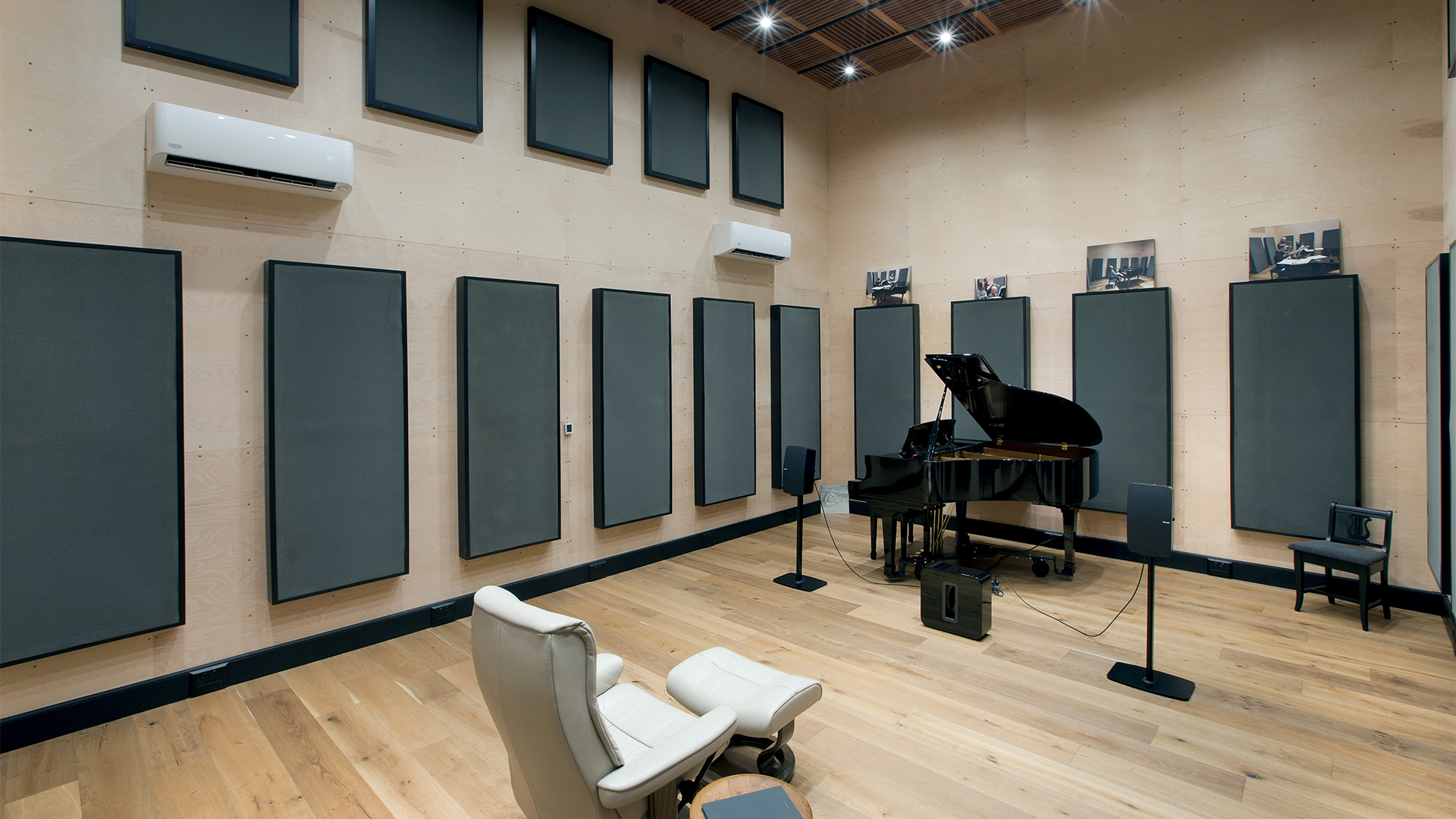
Table of Contents
Understanding Piano Acoustics: Low and High Frequencies
Piano acoustics can be divided into two main categories. If we look at the keyboard for piano acoustics, we will focus on all energies below middle C and all energies above middle C. Below middle C will be lower frequency piano acoustics. Energy above middle C for piano acoustics will be considered middle and high frequency energies. The treatment we will require using piano acoustics will be different for energies below middle C than it will be for above middle C energies.
Lower frequency energy oscillates throughout our rooms. It travels like an ocean wave. Energies above middle C are ray energies which are shorter, straighter, and do not oscillate throughout the room. Let’s look at the piano and any attempt at piano acoustics by considering a piano as a large speaker that is 36″ off the floor.

The Piano as a Large Speaker: Acoustic Dynamics
The stringbed of a piano is a large speaker. It radiates energy from the string board up towards the ceiling. It also radiates full range energies down towards the floor on which it sits. When the strings are struck the piano can generate energy that begins at 20 hz. and can go through 5,000 hz..
To treat this large surface area speaker that is generating full range energy, we will need to focus our treatment first on the lower frequency energies that lie below middle C. At Acoustic Fields, we have developed a treatment program that deals with all aspects of piano acoustics. We have our Carbon Floor Platform. This platform sits under the piano and deals with the energy below middle C.

Targeting Lower Frequency Energies in Piano Acoustics
To treat all the energy above middle C, we look to our foam technology. Our Foam technology begins working at 125 hz. and extends through 6,300 hz. This is the frequency range that mix engineers work within. When we are dealing with moiddle and high frequency energy, we must look to the room for assistance in our efforts to manage piano acoustics.
Middle and high frequency energies radiate from the string bed and go out into the room. They reflect off the walls, floor, and ceiling. If you add the reflections from all of these surface areas, you get reverberation. Reverb is defined as to how long a sound stays around within a room after it has been sung, spoken, or played. Reverberation has a negative impact on both speech and music.

Advanced Treatment for High Frequency Piano Energies
Speech intelligibility is defined as to how many words one can clearly hear in a ten word sentence. When we do churches, our speech intelligibility goals start at 80 %. This means that we manage the reverberation times inside the church to allow for 8 out of 0 words to be heard clearly. Reverberation is a measure of decay or how long it takes for the sound energy at a chosen frequency to decay 60 dB from its original fundamental strike.
To manage the cause of reverberation which are the reflections from the walls and ceiling, we turn to sound absorption technologies. With reverberation management it is all about covering enough surface area on each wall and ceiling using the acronym TAP. We must use the correct type of treatment along with the proper amount. Once we have satisfied those two objectives, we must position it correctly.

Speech Intelligibility and Reverberation Control
When you are dealing with piano acoustics within a room or whatever sound source you are considering, it is always a balancing act between lower frequency unwanted pressure and middle and high frequency reflections from the walls and ceiling. Each surface area within the room contributes around 17% to the overall reverberation times.
Some surfaces such as glass, will contribute more to the issue. Most small rooms have reverberation times around 5 seconds. Given most usages we see, the reverb times need to be down into the 2 second or lower range. Both speech and music are negatively impacted by higher than required reverb times. If you design the reverb times within a room to accommodate music, voice will be well served.







